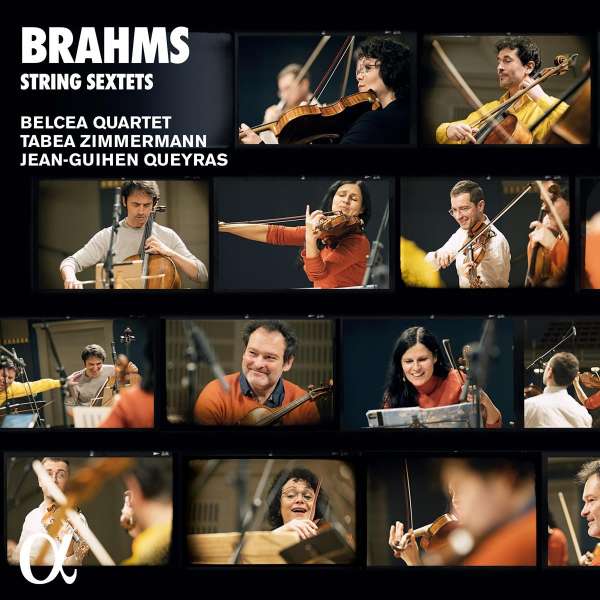Der ausladende, fast 15 Minuten lange erste Satz des 1. Streichsextetts von Johannes Brahms wird vom Belcea Quartett und seinen zwei Gästen mit einem satten Klang gespielt, der einen in wohlige Wärme eintauchen lässt. Auch das Andante ist luxuriös und gefühlvoll, mit einer angenehmen Vielfalt an Texturen.
Konsequent behalten die sechs Musiker ihre Zurückhaltung auch in den beiden letzten Sätzen bei. Das bringt allerdings nie ein zu vorsichtiges oder gar verkopftes Musizieren mit sich, weil in der Zurückhaltung die Kommunikation, das Narrative so stark sind, dass man das Sextett als völlig neuartig erlebt, auch wenn man das Werk sehr gut kennt.
Das Sextett Nr. 2 hat einen nicht weniger vielversprechenden Start. Auch in diesem Opus beweisen die Musiker ein tiefes Verständnis für Brahms’ Musik, wobei das Poco adagio sich in einer himmlischen, leicht melancholischen und fast mysteriösen Atmosphäre entfaltet, die dem als Abschied von Brahms’ Liebe zur Göttinger Professorentochter Agathe gedachten Satz durchaus gerecht wird. Das beschwingte Finale wird zupackender und dramatischer gespielt und die sechs Musiker spüren den Kontrasten nach und streichen das Eigenwillige des mehr symphonisch als kammermusikalisch angelegten Satzes wirkungsvoll heraus.
The expansive, nearly 15-minute-long first movement of Johannes Brahms’ 1st String Sextet is played by the Belcea Quartet and its two guests with a rich sound that immerses one in comforting warmth. The Andante is also luxurious and soulful, with a pleasing variety of textures.
Consistently, the six musicians maintain their restraint in the final two movements. This, however, never entails overly cautious or even cerebral music-making, because despite the restraint the communication, the narrative, are so strong that one experiences the Sextet as entirely new, even if one knows the work very well.
The Sextet No. 2 has a no less promising start. In this opus, too, the musicians demonstrate a deep understanding of Brahms’s music, with the Poco adagio unfolding in a heavenly, slightly melancholy and almost mysterious atmosphere that does justice to the movement conceived as a farewell to Brahms’s love for Agathe, the Göttingen professor’s daughter. The buoyant finale is played more grippingly and dramatically, and the six musicians trace the contrasts and effectively bring out the idiosyncrasy of the movement, which is more symphonic than chamber music.


















